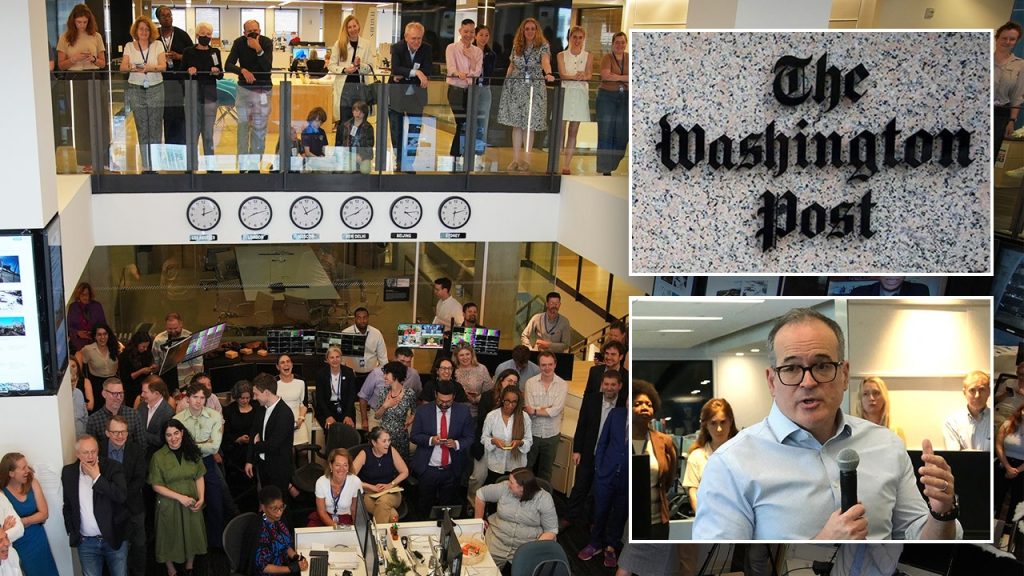The Washington Post recently announced a new buyout initiative aimed at veteran employees and specific staff departments as part of its ongoing transformation efforts. Executive Editor Matt Murray communicated the details of the program through an internal memo, highlighting the need for modernization in response to the rapidly changing media landscape. With concerns about morale and staffing levels, this move coincides with significant financial losses and an exodus of talent from the organization.
| Article Subheadings |
|---|
| 1) Details of the Voluntary Separation Program |
| 2) Financial Implications and Benefits |
| 3) Staff Reactions and Concerns |
| 4) The Bigger Picture: Industry Trends |
| 5) Future of The Washington Post |
Details of the Voluntary Separation Program
The Washington Post is rolling out a Voluntary Separation Program (VSP) targeted at employees with ten or more years of service. This includes those in the video department, as well as the copy desk and sports copy desk. According to Matt Murray, the executive editor, this initiative is part of ongoing efforts to reshape the newsroom amid changing industry dynamics. Employees who take advantage of the VSP will receive nine to eighteen months of base pay, depending on their length of service. Additionally, all departing staff will accumulate a year’s worth of pay credits in their separate retirement accounts.
Financial Implications and Benefits
The financial structure of the buyout program appears to have layers of incentives designed to encourage longer-serving employees to consider early retirement. For instance, employees with ten to fifteen years of service can expect nine months of their base salary, rising to eighteen months for those who’ve been with the organization for over twenty-five years. This generous compensation is crucial as the Post faces projected losses of $77 million in 2024. The selected compensation packages reflect a strategic decision to manage financial obligations while also attempting to streamline staffing levels.
Staff Reactions and Concerns
Feedback from within the organization has been mixed, reflecting a climate of uncertainty. One staffer described the buyout initiative as “less discerning” than previous offerings, suggesting that it may not adequately address the nuances of talent retention, especially in crucial editorial roles. Many believe that with a more comprehensive approach, staff morale could have been better managed. Concerns are also mounting regarding workload and quality of journalism, as remaining staff grapple with taking on expanded responsibilities. The Post’s spokesperson indicated that this program is part of a broader strategy to meet industry needs and adapt to evolving audience demands.
The Bigger Picture: Industry Trends
The Washington Post’s decision is not isolated; it mirrors wider trends across the journalism landscape, where many outlets are evaluating staffing and operational costs amid digital transformation. Several media organizations have recently implemented similar measures, reflecting a concerted effort to adapt to audience behavior and technological advancements. Murray mentioned the necessity for media entities to “expand in areas such as audience data and social video,” underscoring a pivot towards newer platforms for delivering content. The move also highlights a critical need for flexibility in staffing, exemplifying how organizations must adapt to attract and retain audiences in an increasingly competitive market.
Future of The Washington Post
Looking ahead, The Washington Post is at a crossroads, needing to reconcile its historical legacy with modern demands. Already challenged by financial instability, the organization’s choice to pursue buyouts raises essential questions about its long-term viability and direction. Key stakeholders are observing closely, with many advocating for changes in leadership style from owner Jeff Bezos, as his approach has drawn scrutiny from both employees and industry analysts. As the Post seeks to navigate future challenges, maintaining its journalistic integrity while embracing innovation will be paramount.
| No. | Key Points |
|---|---|
| 1 | The Washington Post is implementing a buyout program for seasoned staff to reshape its newsroom. |
| 2 | Staff participants will receive a compensation package based on their years of service. |
| 3 | Mixed reactions indicate concerns about morale and quality of work among remaining staff. |
| 4 | The move reflects broader industry trends of staffing evaluations amid digital transformation. |
| 5 | Future leadership changes may be necessary for The Washington Post to sustain its legacy. |
Summary
In summary, The Washington Post’s recent buyout program represents a strategic effort to modernize its newsroom while addressing financial challenges. As veteran staff are encouraged to leave, the organization must grapple with how this will affect its journalistic integrity and operational capacity. The initiative aligns with broader industry shifts and necessitates thoughtful leadership to navigate the future successfully.
Frequently Asked Questions
Question: What is the Voluntary Separation Program (VSP)?
The VSP is a buyout initiative offered to seasoned employees at The Washington Post, providing financial incentives for them to voluntarily leave their positions.
Question: How does the compensation work for those opting into the VSP?
Compensation is tiered based on years of service, with varying packages ranging from nine months to eighteen months of base pay, along with retirement account credits.
Question: Why is The Washington Post undergoing this change now?
The change is driven by financial losses and the need to adapt to evolving media consumption habits, alongside technological advancements in the industry.


